Nowadays, peeling is the basis of quality facial skin care. This procedure, if used regularly, returns health and natural inner glow to the skin. A professional peeling procedure is a very popular service in cosmetology offices and beauty salons, but if there is no opportunity or time to visit professionals, facial peeling can also be done at home.
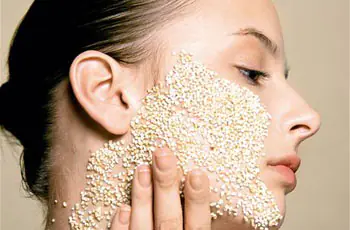
Translated from English, the word peel (to peel) literally means to cleanse the crusts, based on this, it can include all products with a cleansing and exfoliating effect. Regular use of such products makes the skin beautiful, restoring its health and purity. Four types of peeling are especially popular today: vacuum, mechanical, chemical and laser. All of them perfectly cleanse the skin, eliminate minor defects, smooth out wrinkles, thereby providing a rejuvenating effect. The only difference is the method of influence. You can also do peeling at home, and the result will be no less effective, despite the weaker effect. Already after the first procedure, complexion improves significantly.
Homemade peeling products can be used no more than twice a week, otherwise the abuse of cleansing procedures leads to the skin losing its natural protection, which in turn negatively affects its condition (at best, causes irritation). Only heavily keratinized areas of the skin (elbows, knees, soles of the feet) can be subjected to frequent peeling procedures.
The effectiveness of peeling procedures.
Peeling is an excellent treatment method for those with oily, acne-prone skin. It perfectly cleanses and exfoliates dead cells of the upper layer of the epidermis, giving the skin a radiant appearance and solving the problem of clogged pores. Regular implementation of this procedure helps improve regenerative processes in cells, and also enhances the production of collagen and elastin fibers. In addition, peeling has a whitening effect, eliminating small stains. Typically, to achieve this effect, peeling products contain azelaic or phytic acid, as well as vitamin C. After this procedure, the skin becomes smooth, soft and elastic.
It should be noted that home peelings are an excellent means of maintaining the effect of a professional procedure in a cosmetology salon. After its implementation, the effectiveness of the effects of the applied cosmetics increases.
Mechanical peeling at home.
This type of peeling involves the use of care products that contain microparticles of artificial or natural origin (abrasives). This can include crushed apricot kernels, nut shells, elements of healing mud or sand, and special wax. Usually such products are called scrubs. Today, cosmetic manufacturers present a huge range of scrubs for home use. It is recommended to give preference to scrubs from the same line as the cosmetics you use daily.
When choosing a peeling product, you should consider your age and skin type. It is no secret that young skin does not particularly need exfoliation with abrasive particles, but for mature skin it is necessary to choose products that contain a large amount of exfoliating particles. In addition, for those with oily, combination and normal skin, the procedure can be performed two to three times a week, but for sensitive and dry skin, home peeling is not recommended more than once every two weeks. It is also worth noting that for sensitive and dry skin, preference should be given to cream-based peeling. In such products, wax is an exfoliating and cleansing component. When choosing formulations for home chemical peeling, those with dry skin should give preference to products with alpha hydroxy acids. These products prepare dry skin for further exposure to moisturizers, ensuring good breathing and a healthy glow. For sensitive skin types, it is recommended to choose products with a low level of acid, for example, those containing salicylic acid.
Those with oily skin types are recommended to undergo glycolic peeling; in this case, reddened pores will be less noticeable.
It should be noted that the procedure can only be carried out on healthy (without inflammation, scratches and pimples) skin, otherwise you can use mild exfoliating agents (gels, foams, creams).
Products for home peeling are absolutely safe, but it is important to strictly follow the instructions for use in the instructions, especially when it comes to exposure to acid-based products. After peeling with added acids, it is recommended to avoid exposure to ultraviolet rays (including visiting a solarium) for two weeks. By the way, it is also not recommended to sunbathe a week before the procedure. It is imperative to use sunscreen cosmetics (SPF at least 15 in winter and at least 30 in summer).
When taking medications, before performing microdermabrasion or chemical peeling at home, it is important to consult with a specialist, since the agents included in medications and cosmetics may react in a way that no specialist can predict.
If your daily care product contains retinol or fruit acids, then a week before the procedure you should stop using them. Any type of peeling is contraindicated during pregnancy and breastfeeding.
Chemical peeling at home.
At the initial stage, you should cleanse your face well. Typically, home peeling kits include everything you need for this. Still, if a cleanser is not provided in the kit, use a cleansing gel. After the skin is cleansed, you can apply an acid-based cream or mask. During its exposure, a slight burning sensation may be felt, but you should not be afraid of it. But if, in addition to the burning sensation, you notice severe redness of the skin, the product should be washed off immediately. If you do not feel any particular discomfort, leave the product with acid on your face for the time specified in the instructions. After this, lubricate the skin with a restorative liquid that normalizes the pH level, which is also included in the kit. The number of procedures depends on the strength of the drug. On average, two to three procedures are performed over seven to ten days. It is recommended to carry out such treatment two to three times a year.
Fruit peeling at home.
It's no secret that some fruits have a whitening, cleansing and rejuvenating effect on the skin. To carry out home peeling with fruits, you need to prepare a mask: take 100 g of pineapple and papaya pulp and squeeze out the juice. Mix the resulting juice with a tablespoon of liquid honey. Mix everything well and apply to a previously cleansed face. Leave the mask on for no more than five minutes and rinse off with cool water. Before the procedure, it is very important to test for allergies to the composition of such a peeling mask. This fruit peeling procedure is not recommended to be done more than once a week.
Another option for a peeling mask with fruits: combine a tablespoon of olive oil and rosehip oil and add a teaspoon of citric acid. Leave the mixture for five minutes and remove with cool water.
Glycolic (deep) peeling at home.
Glycolic peeling is recommended in the spring. The procedure uses glycolic acid; it is applied as a mask or scrub (except for the area around the eyes and mouth), left for three to five minutes, and then washed off. A slight burning sensation may be felt during acid exposure. To avoid irritation after the procedure, it is recommended to avoid direct sunlight and not use other cosmetics for two hours.
Salicylic peeling at home.
Salicylic peeling involves applying 15% salicylic acid to the facial skin. The procedure perfectly cleanses the skin and exfoliates the upper keratinized layer of cells, helps normalize the functioning of the sebaceous glands, improves complexion, and also eliminates acne. The acid is applied to the skin for three to five minutes, after which it is washed off and a nourishing oil-based cream is applied to the skin.
Enzyme peeling at home.
This method uses scrubs that contain enzymes - enzymes that help dissolve and remove dead skin cells. The composition can be applied for fifteen minutes to the skin of the face, neck and décolleté. This procedure is contraindicated for acne and existing skin lesions.
Retinoic peeling at home.
This procedure is based on the use of a peeling agent with retinoic acid. The product is applied to the face and left for half an hour, after which it is washed off. This procedure helps improve the structure of the skin, smoothes it out, and also eliminates age spots. In order to achieve maximum effect, the procedure is carried out once a week for one and a half months.
Recipes for homemade peeling masks.
Grind two tablespoons of rolled oats flakes in a coffee grinder and mix with the same amount of chopped almonds. Next, in a separate bowl, mix a teaspoon of heavy cream with the same amount of strongly brewed green tea, adding a drop of rose oil. Combine both mixtures and stir thoroughly. The composition should sit for about twenty minutes, after which apply it to a damp face and neck with light massaging movements, following the massage lines. Leave the mixture on your face for fifteen minutes, then rinse off. Finally, lubricate the skin with a nourishing oil-based cream.
The same recipe is suitable for oily skin types, only it contains one teaspoon of chopped oatmeal, add skim milk instead of cream, and replace rose oil with lemon essence.
Dry the peels of any citrus fruits and grind them in a coffee grinder. For the procedure, you should mix the required amount of crushed peels with kefir or yogurt without additives and apply to the skin like a scrub.
Coffee grounds are the best natural exfoliant for the skin. It can be used as an independent ingredient, or can be combined with fermented milk products. If the skin is dry or normal, the thickener is combined with cream, milk, sour cream or vegetable oil, but if the skin is oily, whey, kefir or yogurt is added. Apply the composition with light massaging movements onto a moistened face and let it dry, then rinse with warm and then cool water.
Clay masks have cleansing and adsorbing properties. Clay can be used either alone or in combination with pre-crushed eggshells (if deep peeling is necessary).
Mix a teaspoon of crushed rice with two tablespoons of cottage cheese, then add half a teaspoon of olive oil to the mixture. The composition should be warmed up and after applying to the face, leave for fifteen minutes.
An excellent product for home peeling is a freshwater sponge or bodyaga. It should be dried and turned into powder. To cleanse oily skin, dilute the powder with hot water and apply the mixture for ten minutes; to exfoliate the skin, bodyagi powder is combined with hydrogen peroxide and used as a scrub.
Grind the strawberries into puree, take a tablespoon and combine with half a tablespoon of honey and add a little almond butter. Apply the composition to the skin with rubbing movements for two minutes, then rinse with cool water.
Combine freshly squeezed juice from one lemon and one orange with a tablespoon of salt and the same amount of milk. You should get a homogeneous, not thick mass, which should be rubbed into the skin for two minutes. Then leave it on your face for seven minutes and then wash off with cool water.
Combine a teaspoon of salt or sugar with a tablespoon of cream or olive oil. Apply the composition to the skin with massage movements and leave for five minutes. Rinse off with cool water.
It is impossible to describe all the recipes for homemade scrub masks, and this is not required. The main thing is to follow the recommendations described above and take proper and regular care of your skin. Then she will thank you with health, radiance and beauty.

Problem skin always requires special care. As a rule, to eliminate troubles such as acne and pimples, many women often use an easy and effective method - facial peeling at home. The procedure for cleaning the surface layer by removing dead cells was known to the ancient Egyptians. Today, peeling is the most popular service that can be used in a beauty salon, but it is easy to do it yourself at home, the main thing is to follow certain rules.
What is facial peeling
The cosmetic procedure for removing dead epidermal cells of varying depths is called peeling - from the English “to peel”, which translates as “to sand” or “to scrape hard”. Mechanical manipulations, which are performed at home, cleanse and exfoliate the skin well, but at the same time have a shallow effect. A chemical type of peeling provides a strong, rejuvenating, pronounced effect. As a rule, it will require special equipment, cosmetics, and professional knowledge.
Homemade facial peeling improves skin nutrition, triggers its regeneration mechanism, while it effectively eliminates shallow wrinkles and minor defects (scars, unevenness, enlarged pores, age spots). Due to the forced renewal of the epidermis, this procedure is not advisable to carry out before the age of 25, because natural self-regulation may be disrupted.

Types of peeling
You can free the skin from sebaceous secretions, dirt plugs, and dead particles at home using a special cleansing procedure. There are chemical, mechanical and laser peelings, which have a deep, superficial and medium effect on the skin. As a rule, mechanical and medium peeling are more often used at home. They affect only the upper or middle layers of the epidermis, improve color, remove dead cells, and stimulate regeneration.
Mechanical
Exfoliation is similar to polishing a surface. Mechanical peeling at home for the face can be deep (microcrystalline) and superficial (brossage, film mask, gommage). The service of microdermabrasion or microcrystalline cleansing can only be used in a cosmetologist’s office, because it requires special technological equipment.
Brossage is the mildest cleaning product; it can be done at home using a soft brush. The gommage is based on fruit acids (fig, pineapple), which, by weakening the bond of the stratum corneum, help to gently remove it. Mechanical peeling is carried out using small aluminum particles. If the exfoliation procedure is carried out at home, the following precautions should be observed:
- Avoid the area around the eyes;
- scrubs are used only after passing a sensitivity test;
- the intensity of movements should be moderate;
- After all manipulations, you can use a rich cream.
Chemical peeling for the face at home
Exfoliation or chemical, acid peeling, depending on the degree of exposure, can be deep or superficial. For such cleansing at home, a variety of gommage creams and chemicals are used. The course of therapy includes 10 procedures and is recommended for women under 35 years of age. After using them, a burning sensation may be felt. When performing chemical cleaning, scrubs with plant enzymes and organic alpha-hydroxy acids (retinoic, malic, phytic) are often used.
Thanks to the action of chemical components, several layers of keratinized cells are exfoliated at once, which helps stimulate the synthesis of collagen and elastin. The effect of the procedure will be increased elasticity and rejuvenation. Chemical peels have several types of intensity:
- deep is carried out using a phenol solution;
- the basis for cleaning the middle layers is trichloroacetic acid, its concentration ranges from 20 to 50 percent;
- For surface dry cleaning, scrubs with calcium chloride, glycolic and salicylic acid are used.
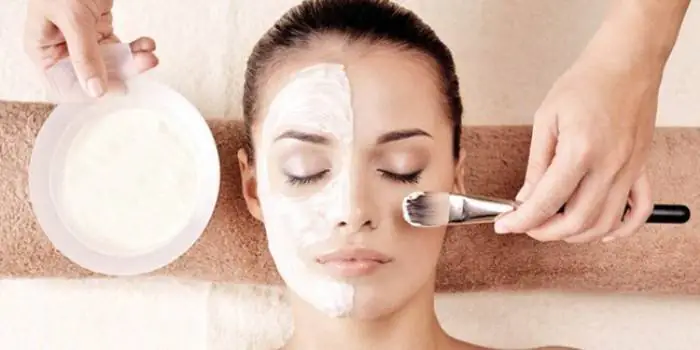
Laser
One of the most popular rejuvenation techniques is laser peeling, which is based on the use of light radiation. The advantage of its use is: painlessness, the ability to adjust the depth of beam penetration, minimal likelihood of side effects. Exfoliation can be carried out using two types of devices:
- Erbiev. This method gets its name from the chemical used for cleaning. Erbium filters the laser beam, evaporating only the keratinized upper cells, while it does not cause mechanical damage.
- Carbon dioxide. Such a device is capable of performing deep exfoliation with amazing precision. Powered by carbon dioxide. Carrying out laser cleaning requires preliminary preparation: you must stop visiting the solarium in advance.
Indications for the procedure
The recipe for beauty is proper care. Women should not avoid cosmetic procedures, but they should not overuse them either. Young girls with oily skin should choose scrubs; for dry skin, gommages are more suitable. Peeling is indicated in the following cases:
- photoaging;
- dull complexion;
- enlarged pores;
- hyperpigmentation;
- acne, post-acne, comedones, blackheads;
- reduced turgor, i.e. the skin is not elastic, flabby;
- ingrown hairs or scars;
- age-related changes;
- unevenness on the face.
Facial peeling at home - recipes
To look younger, you need to target the deeper layers of the skin. This cosmetic procedure will help restore elasticity, smooth out wrinkles, eliminate capillary stars and pigmentation. As a rule, facial cleansing services are offered in clinics and beauty salons, but it costs a lot of money. You can consult a dermatologist about contraindications and do facial peeling yourself at home. The main thing is to correctly determine your skin type.
For normal skin
The right scrub can prevent a decrease in tone, slow down the aging process, and support cells during vitamin deficiency or bad weather conditions. Cleansing procedures done at home help eliminate existing signs of age and minor physiological and cosmetic defects. Most popular recipes:
1. Coffee scrub. To get rid of keratinized scales, you can use ground grains or grounds. To do this you will need: honey, coffee and olive oil in equal proportions (a teaspoon). Mode of application:
- All ingredients should be mixed thoroughly.
- Next, the resulting scrub is applied in a circular motion to the face.
- You can massage it lightly.
- Leave the mixture for 10 minutes.
- After washing with water, apply a nourishing mask.
2. Sour cream. This cleaning will help remove unevenness and roughness. To prepare the composition you will need half a glass of sour cream, a tablespoon of fine salt. Application:
- The ingredients should be mixed thoroughly.
- Then you need to take an old toothbrush with natural bristles and dip it in the prepared mixture.
- Using small circular movements along the massage lines, carefully treat your face.
- This cleaning must be done for 3 minutes.
- Next, you need to wash your face with warm water and pat your face dry with a napkin.
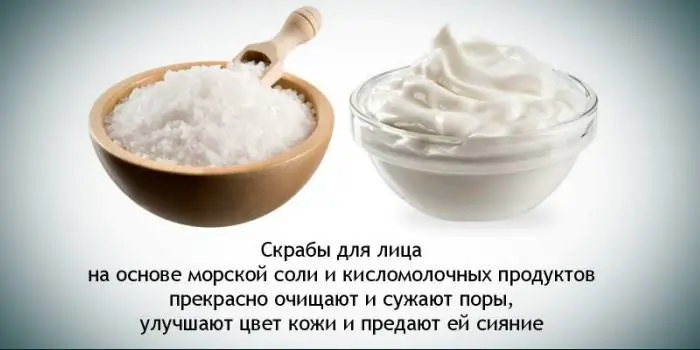
3. Fruit peeling. Before using the composition, you must cleanse the skin. To prepare, you will need 100 g of pineapple pulp, a tablespoon of oatmeal and, if desired, kefir or cream. Application:
- All products must be mixed well.
- Apply a thin layer to the face.
- Leave for about 10 minutes.
- Rinse off with warm water.
For combined type
Mixed skin is the most demanding to care for. In addition to daily moisturizing and cleansing procedures, it is necessary to regularly cleanse. Only an integrated approach will help align tissue structure and normalize metabolic processes. Most popular recipes:
1. Cranberry-lingonberry. To prepare it you will need crushed berries (one tablespoon each), two drops of orange oil, oatmeal, a teaspoon of brown sugar and a drop of almond oil. Mode of application:
- All ingredients are thoroughly mixed.
- The resulting composition, lightly rubbing, should be applied to a clean face.
- Next, you need to gently massage the skin for a minute.
- The mixture should be left for about 10 minutes, then rinsed off with warm water.
2. Egg. This procedure is carried out once a month. The session duration should be 5 minutes. To prepare the mixture you will need a tablespoon of oatmeal, half a teaspoon each of table salt and honey, and one yolk. Application:
- All ingredients must be mixed well.
- Apply the resulting mass to a damp, clean face and massage it lightly.
- Leave the mixture for about 10 minutes, then rinse with cool water.
3. Dairy. The procedure is ideal for combination skin. The composition of the mixture includes a tablespoon of milk powder and half a tablespoon of cosmetic clay. Application:
- All ingredients must be mixed thoroughly.
- If desired, you can add honey, jojoba oil and sea salt.
- The resulting mixture should be applied to a cleansed face and left for 10 minutes.
- You can wash off the mixture with warm water.
For oily skin
This type needs deep cleansing of pores and their narrowing. Oily skin that is not subjected to regular cosmetic procedures will quickly become a breeding ground for bacteria, which often leads to inflammation. Exfoliation is a reliable method of getting rid of sebum, dirt and germs. Most popular recipes:
1. Sugar. After using this cleanser, the skin will become smooth and matte, and the oily sheen will disappear. The recipe does not require hard-to-find ingredients. To prepare, you only need baby soap and a teaspoon of sugar. Application:
- The soap must be lathered well in your hands.
- Apply the foam to the face, avoiding the eyelid area.
- Next, pour sugar into your palm and massage your face in a circular motion for two minutes.
- Rinse off the mixture with cool water.
- Instead of sugar, you can use baking soda.
2. Cucumber. This cleansing will help achieve a rejuvenating effect. To prepare the mixture you will need fresh cucumber, salt, oatmeal and 2 drops of rose oil. Application:
- Cut the peel from a fresh cucumber, chop the pulp, squeeze out the juice.
- Next, mix a teaspoon of iodized salt with a large tablespoon of oatmeal in a bowl.
- Cucumber juice should be gradually added to the resulting dry mixture until a homogeneous mushy mass is formed.
- Then add rose oil to the composition.
- Massage the resulting scrub onto your face for 2 minutes and leave for another ten.
- Rinse off the mixture with warm water.
3. Almond peeling. This type of cleaning will effectively remove unpleasant oily shine. To prepare, you will need a teaspoon of cosmetic clay and the same amount of ground nuts. Application:
- It is necessary to mix all the ingredients (you can use ground shells, seaweed, medicinal herbs instead of almonds).
- Dilute the resulting mass with water until it becomes sour cream. Apply the mixture to your face, gently massaging the skin for 2 minutes.
- After this, you can wash your face with warm water.
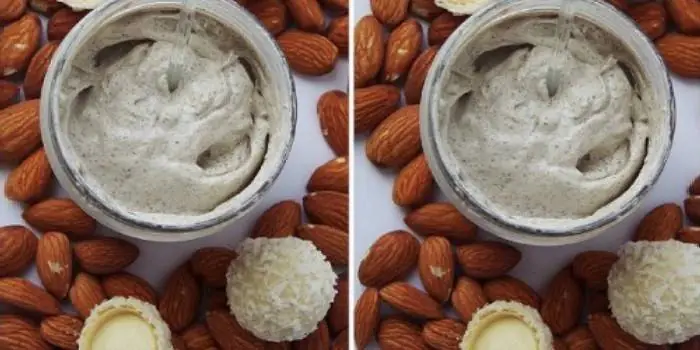
For dry
Caring for this type of skin has a number of features that are subject to the main principle - gentle action. Given the sensitivity of dry skin to external influences, you should choose products with a mild exfoliating effect. You can choose ready-made medications or use traditional recipes with natural products. Most Popular:
1. Citrus-curd. This mixture perfectly softens the skin, making it soft and smooth at the same time. To prepare the mass, you will need 2 tablespoons of cottage cheese and milk, orange zest and lemon oil (a teaspoon each). Application:
- All ingredients must be mixed well.
- Next, the resulting mixture, gently rubbing, should be applied to the face.
- After 7 minutes, you need to wash with warm water.
2. Strawberry. The most delicious recipe contains simple, affordable ingredients that can be purchased at any store. To prepare the mixture you will need pink clay, a tablespoon of sour cream and strawberries. Application:
- You must first mix the crushed berries with sour cream.
- Then add clay.
- The resulting mass should be applied to the face with massage movements.
- Massage the skin for 5 minutes.
- Then leave the mask for another 7 minutes.
- Rinse with water at room temperature.
3. Oatmeal. This procedure should be carried out in a course of 15 days before bedtime, after which rest for a couple of months is necessary. To prepare, you will need water, a tablespoon each of bran and oatmeal. Application:
- It is necessary to grind all the components in a coffee grinder, add 3 tablespoons of water.
- Mix everything until smooth.
- The mixture should be applied to the face.
- Next, wash with warm water and apply cream.
- If one of the ingredients is missing, you can make a one-component mask, doubling the amount of the available product.
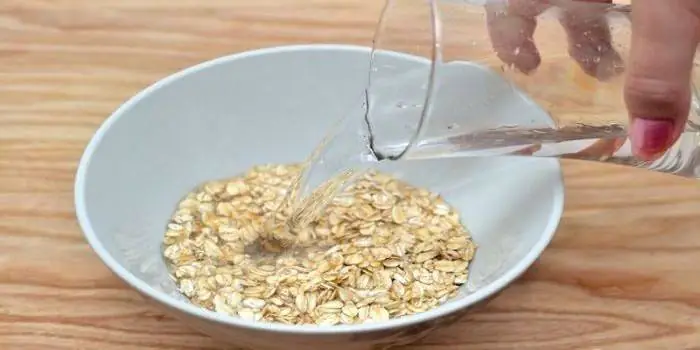
How to do facial peeling at home
To maintain normal functioning of the glands and restore a healthy appearance to the facial skin, it is recommended to cleanse. As a rule, the frequency of treatments depends on the skin type. Oily skin should be cleaned weekly. For dry skin, you can cleanse once a month. Combined and normal - must be processed every 2 weeks. After the procedure, complications can sometimes occur, especially on highly sensitive skin. The reasons may be violation of recommendations for use, individual intolerance to components.
Experienced cosmetologists advise deep peeling only in winter and autumn. At other times of the year, mechanical impact on the skin due to direct sunlight is not allowed. In addition, when performing cleansing at home, you must adhere to certain rules:
- Before the procedure, you need to do an allergy test. To do this, apply a little of the mixture to your elbow, wait 10 minutes, rinse and evaluate the result. If there is no redness, you can safely clean it.
- The epidermis should be covered only with a thin layer, without interfering with the exposure time. If you neglect this advice, there may be a risk of burns, especially from chemical compounds.
- The face must first be cleansed with lotion or tonic. Do not apply the mixture to the area around the eyes. This area is sensitive.
- At the end of the procedure, you should refrain from using decorative cosmetics. It clogs pores.
Contraindications
There are practically no contraindications for surface cleaning. The main thing is to take into account the degree and type of skin sensitivity. Rarely, an allergic reaction to the components of a cosmetic mixture may occur. The situation is different if you need to do deep peeling. Before performing it, you should consult a cosmetologist. The main contraindications for the procedure are:
- pronounced rosacea;
- sensitivity;
- skin disease (allergic dermatosis, psoriasis, herpes, atopic dermatitis);
- pregnancy, breastfeeding;
- chronic diseases in the acute stage;
- oncological diseases;
- predisposition to scar formation;
- individual intolerance to ingredients;
- open wounds;
- mental illnesses;
- colds, ARVI;
- skin infectious diseases.
Video
Reviews
Katya, 25 years old Since I was 14 years old, I have been constantly struggling with blackheads and pimples. I went to a cosmetologist and took tests. I completed a whole course using cosmetics, in addition to it I did cleansing at home using a scrub and gommage. Only in combination I managed to achieve a good result
Maria, 30 years old For my combination skin, I try to do deep cleansing once a week; I refuse superficial peels, because... there was no particular effect from them. I make this mask at home: I mix oatmeal, sour cream, olive oil in equal proportions and apply it to my face. I keep it like this for 10 minutes and wash my face. The skin is clean and young.
Elena, 37 years old, skin cleansing is necessary at any age. Although I didn’t pay attention to it before, now I regret it, because... The circles under the eyes and small pimples became very noticeable. I try to do a light cleansing at home with natural ingredients at least once every 3 days: salt, cucumber, oatmeal. I recently went for a deep cleaning with a cosmetologist, and I also liked it.

To maintain the beauty and health of the skin, it is necessary to periodically care for it with peeling. Cosmetics with exfoliating properties are great for cleansing the skin. At home, you can try mechanical peeling not only for the face, but also for the whole body.
For peeling, you will need special scrubs, which must contain abrasives, which are solid particles. This may include, for example, finely crushed apricot kernels, special wax, small pieces of sand or medicinal mud, as well as nuts. Abrasives perfectly remove the dead layer, allowing the skin to be saturated with oxygen. The skin becomes clean and smooth.
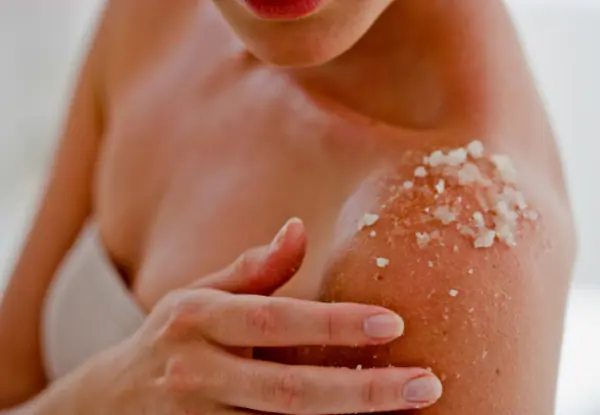
Choose a peeling product based on your skin characteristics and age. Young skin is easiest to cleanse, so you shouldn’t choose very strong products for it. With age, on the contrary, it is recommended to choose a large number of abrasive particles.
Scrubs should not be used on damaged areas of the skin, so if you have pimples, inflammation or wounds, it is best to avoid this procedure. Otherwise, there is a risk of infection, causing irritation. For problem areas, you can choose softer products: gel for washing, foam or special herbal decoctions.
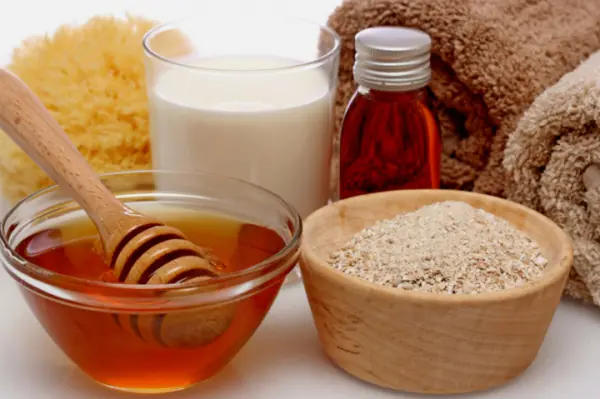
Peeling for oily skin should be done more often than for dry skin. Dry skin requires cleansing approximately once every two weeks, while oily skin needs exfoliation every week. For dry skin, it is best to choose gentler products that do not contain coarse particles from seeds and nuts. Choose products that contain wax. The base of such creams should be creamy.
If you prefer natural ingredients, try making a scrub using oatmeal, after crushing it. Mix oatmeal with water so that you get a viscous mass. Apply the paste onto the desired areas of the body using massaging movements, and then rinse with warm water. After peeling, you can wash your face with a decoction of sage, chamomile or calendula.
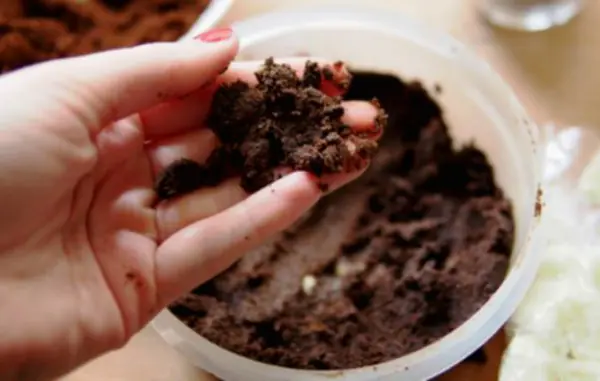
Coffee grounds are also ideal for this procedure. Apply coffee grounds or ground coffee to damp skin. Next, you need to wait until this mask dries a little. Gently massage the skin and then remove the mixture from your face with warm water. Coffee can be mixed with cream to use the mass as a scrub.
You can also make peeling from clay, which perfectly fights excess fat and makes it easy to get rid of toxins. You can use plain clay to cleanse your skin, but if you want an exfoliating effect, add coffee or ground eggshells to the clay.



